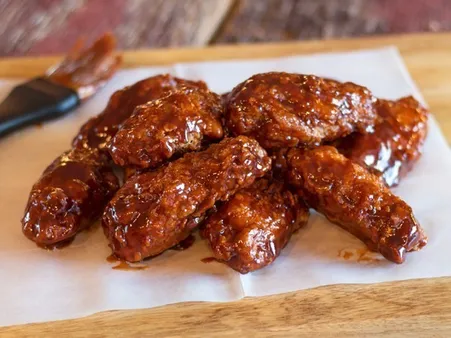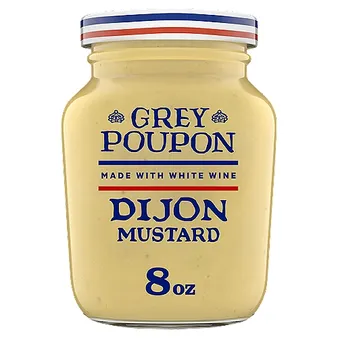Table of Contents
At tauhuichiban, we explore various culinary techniques that elevate home cooking to new heights. Today, we delve into using baking powder to tenderize beef, a method that replicates the succulent texture found in high-end restaurants. By understanding how baking powder interacts with proteins in meat, you can enhance your beef recipes significantly without altering their essence.
Key Takeaways for Tenderizing Beef with Baking Powder | |
|---|---|
#1: | Use 1% of the meat's weight in baking powder for larger cuts. |

Unlock Tender Beef With Baking Powder: A Simple Solution
How Baking Powder Tenderizes Beef
The Magic of pH Levels
Baking powder, a common household ingredient, has a unique property that makes it an effective meat tenderizer. When applied to beef, baking powder raises the pH level of the meat's surface, altering the protein bonds and resulting in a softer texture. This process works similarly to how a gentle massage can relax tense muscles – by breaking down the rigid protein structure, the meat becomes more pliable and tender.
Imagine taking a bite of a juicy, flavorful steak that simply melts in your mouth. That's what baking powder can help you achieve, and it's not just limited to high-end restaurants. With this simple technique, you can replicate the same tenderizing effect at home, without needing to be a skilled chef.
Method | pH Level Effect | Tenderizing Result |
|---|---|---|
Baking Powder | Raises pH level | Breaks down protein bonds, tenderizing meat |
Chemical Reaction Explained
When baking powder comes into contact with the meat's natural acids, a chemical reaction occurs, releasing carbon dioxide gas. This reaction helps to break down the collagen fibers, making the meat more tender and easier to chew. The result is a significant reduction in cooking time, as the meat cooks more evenly and quickly.
Think of it like a little helper that works behind the scenes to transform your beef into a culinary masterpiece. By understanding how baking powder interacts with the meat, you can unlock the secrets to tender, flavorful beef that will impress even the most discerning palates.

How Baking Powder Tenderizes Beef
Using Baking Powder for Different Cuts of Beef
Tenderizing Steaks and Roasts: A Little Patience Goes a Long Way
For larger cuts of beef like steaks or roasts, we gotta be a bit more patient. Think of it like marinating, but instead of herbs and spices, we're using baking powder. We want that baking powder to really work its magic deep into the meat. So, we'll sprinkle about a teaspoon of baking powder for every pound of beef. Then, we gently rub it all over, making sure every nook and cranny is covered. Now, here's the important part: we gotta let it sit in the fridge for at least three hours, or even better, overnight! This gives the baking powder plenty of time to break down those tough proteins and make the beef super tender. It's like giving your beef a relaxing spa day in the fridge!
Quick Fixes for Stir-Fries and Fajitas: Velveting Magic
Now, let's talk about those quick and easy meals like stir-fries and fajitas. For thin slices of beef, we can use a cool technique called "velveting." It sounds fancy, but it's really simple! We'll mix a teaspoon of baking powder with a tablespoon of cornstarch and a splash of water to make a paste. Then, we'll coat the beef slices with this magical mixture and let them hang out for about 15-20 minutes. This quick trick helps the beef retain moisture and become incredibly tender, even when cooked over high heat. Your stir-fries will be bursting with flavor and have that melt-in-your-mouth texture!
Cut of Beef | Method | Time |
|---|---|---|
Steaks and Roasts | Rub with baking powder, refrigerate | 3 hours to overnight |
Stir-fry and Fajita Strips | Velvet with baking powder mixture | 15-20 minutes |

Using Baking Powder for Different Cuts of Beef
Tips and Precautions When Using Baking Powder to Tenderize Beef
Don't Overdo It!
Just like adding too much salt to your food can ruin it, overdoing the baking powder can make your beef taste weird. It's like adding too much spice to your favorite dish—it can overwhelm the flavor and make it unpleasant. A little bit goes a long way, so stick to the recommended amount and you'll be fine. Remember, we're aiming for tender, flavorful beef, not a baking powder-flavored experiment!
Rinse It Off!
Once you've let the baking powder work its magic, it's time to give your beef a good rinse. Think of it like washing your hands after playing with dough—we want to make sure there's no baking powder residue left on the meat. This will prevent any unpleasant aftertaste and ensure your beef tastes delicious and natural. After rinsing, pat the beef dry with paper towels. This helps to remove excess moisture and create a nice, even sear when you cook it.
Tip | Explanation |
|---|---|
Use baking powder sparingly. | Too much baking powder can make the meat taste strange. |
Rinse the beef thoroughly after tenderizing. | This removes excess baking powder and prevents an unpleasant taste. |
- Use baking powder sparingly. Too much baking powder can make the meat taste strange.
- Rinse the beef thoroughly after tenderizing. This removes excess baking powder and prevents an unpleasant taste.
- Pat the beef dry with paper towels after rinsing. This helps create a nice sear when cooking.

Tips and Precautions When Using Baking Powder to Tenderize Beef
Final Thought
Incorporating baking powder into your meat preparation can transform ordinary beef into a tender and flavorful dish. Remember to use this technique judiciously and follow the guidelines provided by tauhuichiban to achieve optimal results without affecting the natural taste of your meat. Experiment with different cuts and timings as suggested in this article for a consistently satisfying culinary experience.